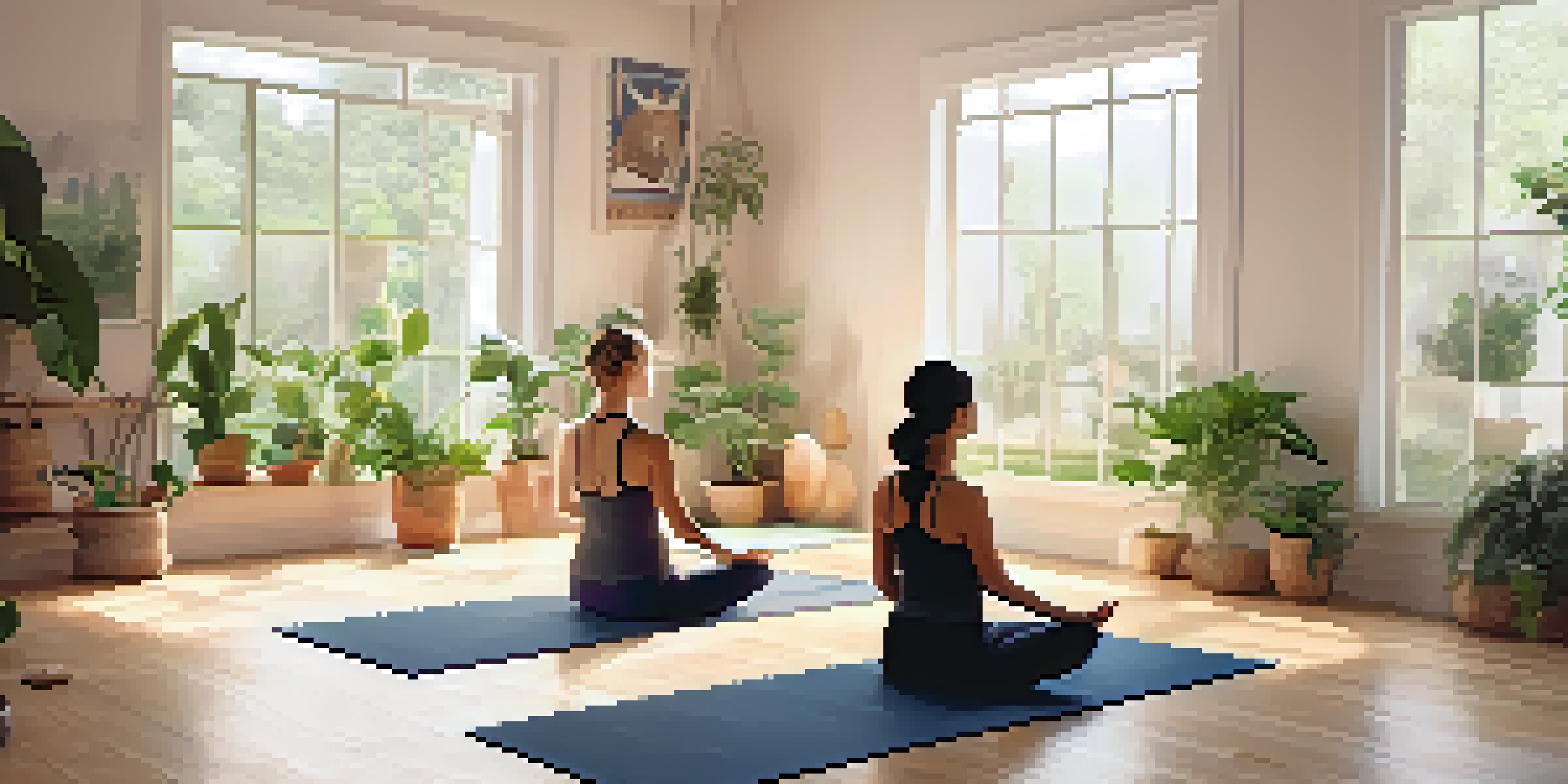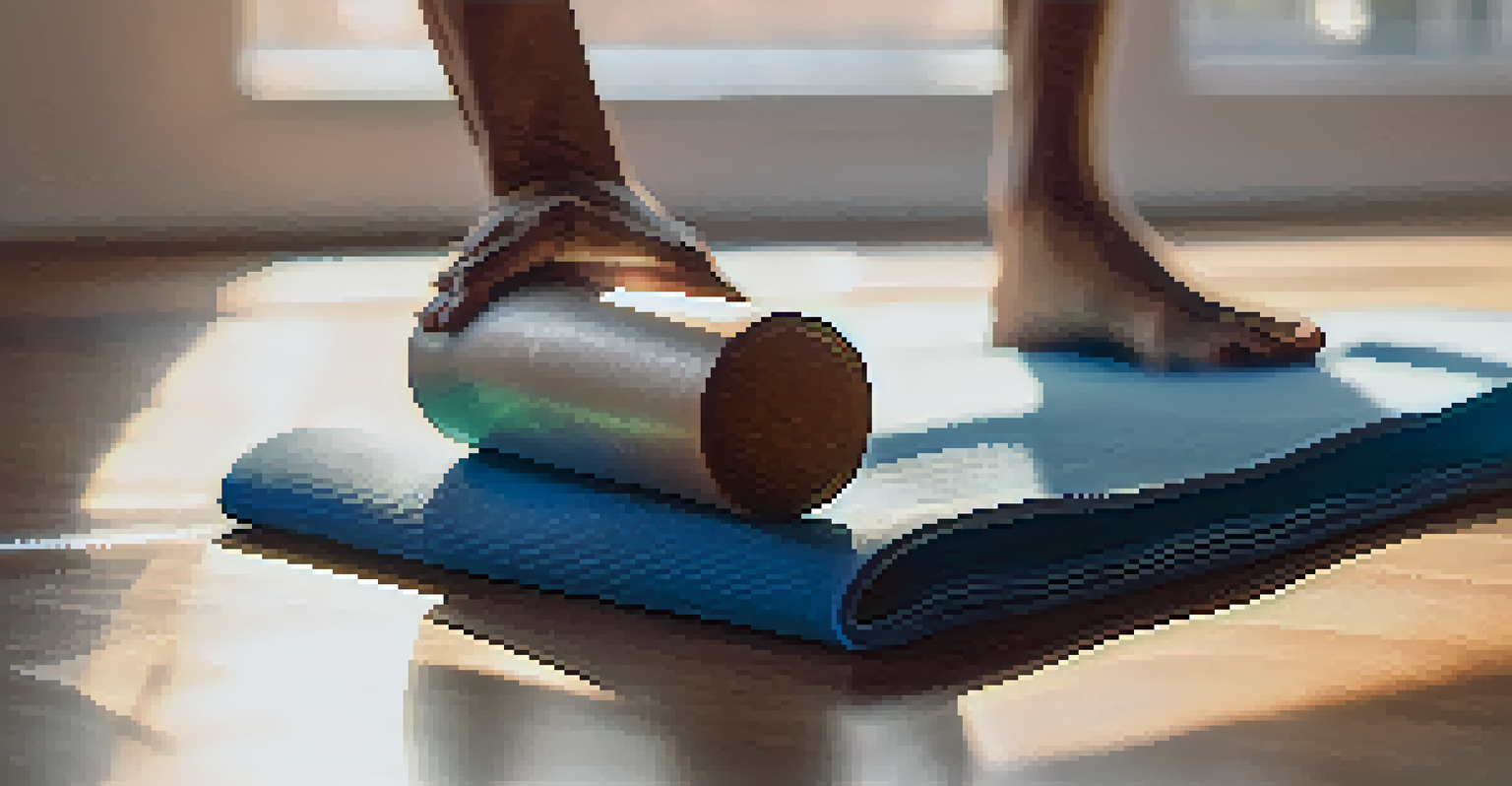Gentle Yoga Practices for Arthritis Pain Relief and Mobility

Understanding Arthritis and Its Impact on Mobility
Arthritis is a condition that affects millions, causing joint pain and stiffness. It can make daily activities feel daunting, as even simple movements may become challenging. Understanding the nature of arthritis is crucial; it involves inflammation of the joints, which can lead to discomfort and reduced mobility over time.
The greatest weapon against stress is our ability to choose one thought over another.
The impact of arthritis often extends beyond physical pain. People may also experience emotional challenges, such as frustration and anxiety about their limited movement. This is where gentle yoga practices can step in, providing not just physical relief, but also emotional support through mindfulness and relaxation techniques.
By incorporating gentle yoga into your routine, you can create a safe space to explore your body’s capabilities. It encourages listening to your body and respecting its limits, which is vital for anyone living with arthritis.
Benefits of Gentle Yoga for Arthritis Sufferers
Gentle yoga offers a myriad of benefits specifically tailored for those with arthritis. It focuses on slow movements and stretches, which can help reduce stiffness and improve overall flexibility. This kind of practice can lead to a noticeable decrease in pain levels, making daily tasks more manageable.

Moreover, the breathing techniques taught in yoga can help alleviate stress, which is essential since stress can often exacerbate pain. By promoting relaxation, gentle yoga encourages a sense of calm, making it easier to cope with both emotional and physical challenges associated with arthritis.
Arthritis Impacts Mobility & Emotions
Arthritis not only causes physical discomfort but also emotional challenges, making daily activities daunting.
Additionally, practicing yoga in a supportive community or with a knowledgeable instructor can enhance motivation. Sharing experiences and tips with others who face similar struggles can provide comfort and encouragement.
Finding the Right Yoga Style for You
When it comes to practicing yoga with arthritis, finding the right style is key. Hatha and restorative yoga are excellent options, as they emphasize gentle movements and deep relaxation. These styles allow individuals to progress at their own pace, ensuring that they don’t push themselves too hard.
Yoga is not about touching your toes, it’s about what you learn on the way down.
It’s important to consult with a healthcare provider before starting any new exercise regimen, especially if you have existing health issues. They can guide you in choosing classes that cater specifically to your needs, ensuring a safe and beneficial experience.
Many studios offer classes designed for those with chronic pain or limited mobility. Exploring these options can provide a supportive environment where you can comfortably engage in yoga without fear of injury.
Essential Gentle Yoga Poses for Arthritis Relief
Certain yoga poses are particularly beneficial for arthritis sufferers. For instance, Cat-Cow stretches the spine while promoting flexibility, and Child’s Pose gently opens the hips and relieves tension in the back. Incorporating these poses into your routine can target areas that often feel stiff or painful.
Another great pose is the seated forward bend, which calms the mind while stretching the back and hamstrings. Gentle twists, like the supine spinal twist, can also be helpful, as they promote mobility without straining the joints.
Gentle Yoga Alleviates Symptoms
Incorporating gentle yoga can reduce stiffness, improve flexibility, and provide emotional support for arthritis sufferers.
Always remember that modifications are your friend. Using props like blocks, straps, or cushions can make poses more accessible, allowing you to enjoy the benefits of yoga without discomfort.
Incorporating Breathing Techniques into Your Practice
Breathing techniques, or pranayama, are integral to yoga and can be especially beneficial for those with arthritis. Deep, mindful breathing helps release tension in the body and promotes relaxation. Techniques like diaphragmatic breathing can enhance oxygen flow, which is crucial for healing and recovery.
As you practice yoga, focus on your breath as a guide. With each inhale, visualize filling your body with warmth and energy; with each exhale, imagine releasing tension and pain. This simple practice can transform your yoga experience and deepen your connection to your body.
Integrating these breathing exercises into your daily routine, even outside of yoga sessions, can also help manage stress and improve overall well-being.
Creating a Safe and Comfortable Yoga Environment
Creating a conducive environment for yoga practice is essential, especially for those with arthritis. A quiet, clutter-free space with enough room to move freely can significantly enhance your experience. Consider using soft lighting and calming music to foster a peaceful atmosphere that invites relaxation.
Comfort is key; wear clothing that allows for easy movement and doesn’t restrict your body. Additionally, having supportive props like yoga mats, blocks, and bolsters can make your practice more enjoyable and accessible.
Listening to Your Body Matters
Understanding and respecting your body's limits is crucial in yoga practice, especially for those with arthritis.
If practicing at home feels overwhelming, consider joining a local class or an online session tailored for arthritis. This can provide structure and guidance while still allowing you the comfort of your own space.
Listening to Your Body: The Key to Successful Practice
One of the most important lessons in yoga is learning to listen to your body. This is especially crucial for those with arthritis, as it helps you understand your limits and avoid injury. Pay attention to how different poses feel and honor any discomfort by modifying or skipping challenging movements.
Yoga is not about achieving perfection; it’s about finding what feels good for you. Every person’s body is unique, and what works for someone else may not work for you. Embracing this mindset can transform your practice into a more enjoyable and healing experience.

Remember, it’s okay to have off days. Consistency is important, but so is self-compassion. Allow yourself to adapt your practice based on how you feel each day, and you’ll cultivate a positive relationship with yoga.